


The Sustainable Industrial Systems group creates a range of software tools to support our own research, communicate research findings and aid resarch, industry or government in improving the sustainability of their activities.
Here you will find further details of, and download links for, our software tools.
| CCaLC 2 for Windows - Sustainable Assessment Tool | |
|
CCaLC2 is the second generation of the CCaLC tools that allows quick and easy estimations of environmental impacts and value added along the supply chains. It takes a life cycle approach and enables estimation of the various environmental impacts including Carbon footprint, Water footprint, Acidification potential, Eutrophication potential, Ozone layer depletion potential, Photochemical smog and Human toxicity potential. CCaLC2 has been developed to enable non-expert users to calculate carbon footprint and other environmental impacts quickly and easily while following internationally accepted LCA standards such as ISO 14044 and PAS2050 CCaLC2 can be downloaded for free from the CCaLC website (www.ccalc.org.uk) now. |
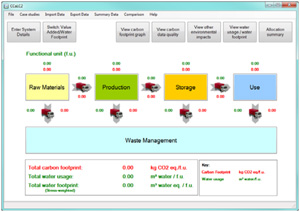 |
| CCaLC for Excel - Sustainable Assessment Tool | |
|
The original CCaLC for Excel tool that allows quick and easy estimations of environmental impacts and value added along the supply chains. It takes a life cycle approach and enables estimation of the various environmental impacts including Carbon footprint, Water footprint, Acidification potential, Eutrophication potential, Ozone layer depletion potential, Photochemical smog and Human toxicity potential. CCaLC for Excel has been developed to enable non-expert users to calculate carbon footprint and other environmental impacts quickly and easily while following internationally accepted LCA standards such as ISO 14044 and PAS2050 CCaLC for Excel can be downloaded for free from the CCaLC website (www.ccalc.org.uk) now. |
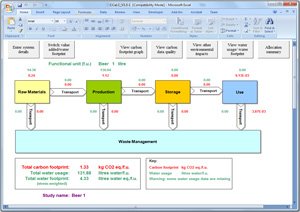 |
| CCaLC LITE for Android | |
|
CCaLC LITE is a simplified version of the CCaLC carbon footprinting tool that enables quick and easy estimations of carbon footprints of everyday products. Its main aim is to help find out what we as consumers can do to reduce our own carbon footprints. Through a number of examples included within the tool, users can estimate the carbon footprints of different food products, packaging, etc. For example, by selecting different food ingredients, sources of energy for cooking or transportation distances, it is possible to find out which options have the lowest carbon footprints. With a straightforward and intuitive user-interface, the tool is simple to use by those new to the concept of carbon footprinting. |
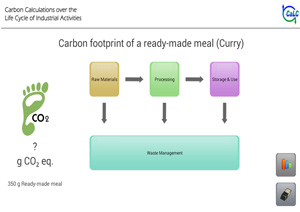 |
| EFE-So | |
|
EFE-So allows users to estimate nitrogen emissions associated with the application of organic and mineral fertilisers. Realisation of EFE-So: Dr. Alessandra Fusi and Prof. Eng. Gigi M. Fusi. Sources of the algorithms: Brentrup, F., Kusters, J, Lammel, J, Kuhlmann, H., 2000. Methods to estimate on-field nitrogen emissions from crop production as an Input to LCA studies in the Agricultural Sector. Int. J. Life Cycle Ass. 5, 349-57. Source of the nitrogen deposition map: fate.jrc.ec.europa.eu/modelling/nutrients. |
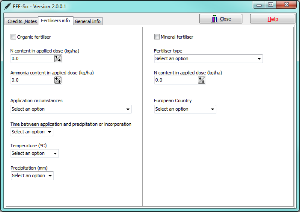 |
| ETLCA - Energy Technologies Life Cycle Assessment | |
|
The Energy Technologies Life Cycle Assessment (ETLCA) tool allows users to define UK electricity mixes out to 2070 based on direct carbon emissions. Different combinations of technologies can be explored in an attempt to meet carbon constraints, and the resulting electricity mixes can then be compared in terms of 12 life cycle environmental impacts such as carbon footprint, ozone layer depletion and acidification. ETLCA therefore allows easy identification of the environmental trade-offs between different approaches to low-carbon electricity. |
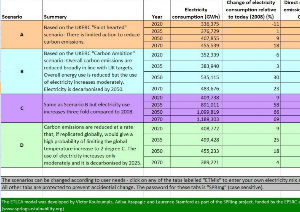 |
| PUrE 2 - Pollutants in the Urban Environment | |
|
Building on the original PUrE Sustainable Assessment Software the PUrE Intrawise project has improved and added many new features and additional functionality to the PUrE2 Software. Building models and indoor air quality models have been added alongside the existing pollutant and impact modelling capabilities built into the PUrE software. In addition existing models and tools such as Life Cycle Assessment, Human Health Analysis and Multi-Criteria Decision Analysis have been substantially improved. |
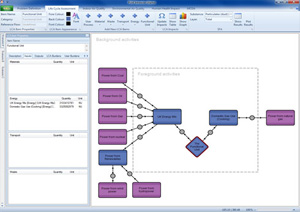 |
| SPRIng MCDA - SPRIng Multi-Criteria Decision Analysis | |
|
The SPRIng MCDA tool comprises two MCDA models: TOPSIS and Fuzzy AHP. It has been developed within the MATLAB platform. |
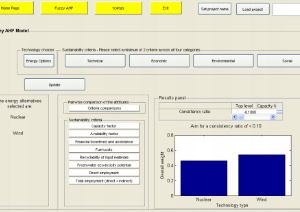 |
| SSAT - Scenario Sustainability Assessment Tool | |
|
With the Scenario Sustainability Assessment Tool (SSAT), users can estimate the techno-economic, environmental and social impacts of potential future electricity mixes for the UK. The technologies currently available in SSAT are coal (with and without carbon capture and storage), natural gas, nuclear, offshore wind, domestic-scale solar PV and large-scale biomass. The user-defined electricity scenarios can be compared in terms of 37 sustainability indicators addressing issues such as levelised cost, carbon footprint, acidification, employment, large accident fatalities and energy security. This broad range of indicators allows identification of sustainability trade-offs between different scenarios. |
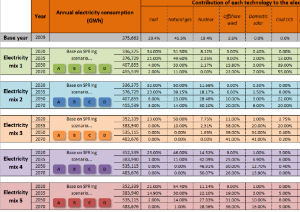 |